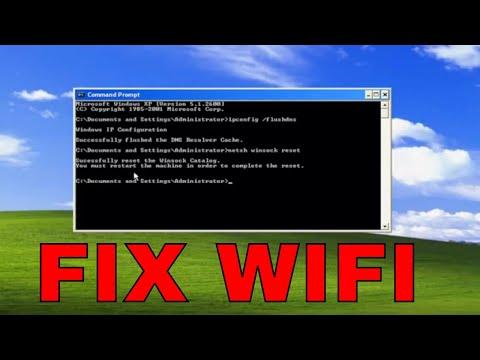Dealing with a wireless connection problem on Windows XP can be a frustrating experience. I found myself grappling with this issue recently when my otherwise reliable wireless network suddenly became inaccessible. It started one morning when I tried to connect to the internet as usual. My computer, running Windows XP, refused to connect to the network. The little icon in the system tray, which usually displayed the strength of my wireless connection, showed a red “X,” indicating that I was not connected. I began to troubleshoot, hoping it would be a simple fix, but quickly realized that the problem was more complex than I had anticipated.
My first step was to ensure that the issue wasn’t hardware-related. I checked the router and the modem to make sure they were powered on and functioning correctly. Both devices seemed to be working fine; the lights were on, and I could connect to the network using other devices. It seemed like the problem was isolated to my Windows XP machine.
I rebooted my computer, hoping it would resolve any temporary glitches. After restarting, I attempted to reconnect to the network, but the issue persisted. My next step was to access the network settings to see if I could identify any obvious problems. I navigated to the Control Panel, then to the “Network and Internet Connections” section, and finally to the “Network Connections” folder. I noticed that my wireless network adapter was listed, but it showed that it was not connected.
Right-clicking on the wireless network adapter, I selected “Properties” to delve deeper. Under the “General” tab, I saw that the device was enabled, which was a good sign. However, I decided to check the settings for any misconfigurations. In the “Wireless Networks” tab, I made sure that the option to “Use Windows to configure my wireless network settings” was selected. This is crucial because, if it’s not checked, Windows XP won’t manage the wireless network connections properly.
Despite these settings appearing correct, I was still unable to connect to my wireless network. Next, I decided to remove and re-add the wireless network profile. In the “Wireless Networks” tab, I saw a list of preferred networks. I selected my network from the list and clicked “Remove.” After removing it, I clicked “Add” to reconfigure the connection. I entered the network name (SSID) and selected the correct security settings, including the correct encryption type and password. This process helps reset any configuration issues that may be causing the connectivity problems.
After adding the network again, I attempted to connect. To my dismay, it still didn’t work. It was time to check for driver issues. I accessed the Device Manager by right-clicking on “My Computer,” selecting “Properties,” and then going to the “Hardware” tab and clicking on “Device Manager.” I expanded the “Network Adapters” section and found my wireless adapter listed. Right-clicking on it, I selected “Update Driver” to ensure that I had the latest driver installed. Windows XP performed a search and found that my driver was up-to-date. If the driver had been outdated or missing, updating it could have resolved the issue.
Since the driver wasn’t the problem, I decided to perform a more thorough reset of my network settings. I went back to the Command Prompt, which I accessed by going to “Start,” then “Run,” typing “cmd,” and hitting Enter. In the Command Prompt window, I executed several commands to reset the TCP/IP stack and flush the DNS cache. The commands I used were:
netsh int ip reset resetlog.txt– This command resets the TCP/IP stack to its default configuration.ipconfig /release– This command releases the current IP address configuration.ipconfig /renew– This command requests a new IP address from the DHCP server.ipconfig /flushdns– This command clears the DNS resolver cache.
After running these commands, I rebooted my computer again and attempted to reconnect to my wireless network. Although I hoped this would solve the issue, I was still faced with the same problem. It was time to check the wireless network settings in more detail.
I returned to the “Network Connections” folder and right-clicked on my wireless connection, selecting “Properties.” In the “General” tab, I verified that the connection type was set to “Obtain an IP address automatically” and “Obtain DNS server address automatically.” This is important because, if these settings are misconfigured, the connection may fail.
Finally, I decided to use the Windows XP Network Setup Wizard to ensure that all network settings were correctly configured. I accessed the wizard by going to “Start,” selecting “All Programs,” then “Accessories,” “Communications,” and clicking on “Network Setup Wizard.” I followed the prompts, which included steps to configure my network settings and ensure that my computer was correctly set up to connect to the network.
After completing the wizard, I rebooted my computer one last time and, to my relief, I was finally able to connect to my wireless network. It turned out that a combination of resetting the network settings and reconfiguring the network profile had resolved the issue. I was relieved to be back online, but the experience had taught me a lot about troubleshooting wireless network problems on Windows XP.
In conclusion, resolving a wireless connection issue on Windows XP involves a series of troubleshooting steps, from checking hardware and network settings to updating drivers and resetting network configurations. Each step is important and contributes to identifying and fixing the problem effectively.
